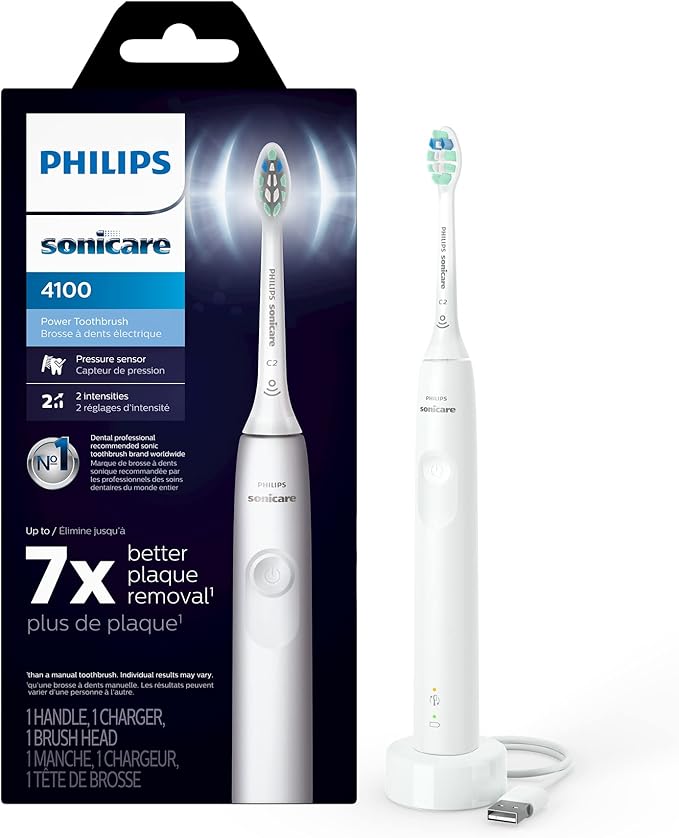TARTAREND® TOOTHPASTE USED TWICE DAILY
- Removes Tartar and Plaque - Above and Deep Below the Gumline
- Stops Bleeding Gums - In Just A Few Weeks
- Returns Gums To Healthy Gum Pocket Depths
- Stops Tooth Loss
- Removes Stains and Whitens Teeth
- Eliminates the Need for Costly Dental Procedures

RECOMMENDED TOOTH AND GUM CLEANING PROCEDURES

4
Steps to tartar and plaque-free teeth, non-bleeding gums, and healthy gum pocket depths

Spread a ½” stripe of TartarEnd® toothpaste on a compact brush head. Spread over the teeth with more TartarEnd® paste on heavy tartar buildup.




Recommended Brushing Procedures for Best Tartar and Plaque Removal
- Put a ½” stripe of TartarEnd® toothpaste on a compact medium bristle brush head fitted to a recommended high amplitude sonic toothbrush.
- Spread the toothpaste over the teeth with a greater amount on the heavier tartar build-up.
- Turn on the brush and guide the brush head lightly over the tooth enamel with the bristles perpendicular to the tooth along the gumline. In this position, the fluid dynamics drive TartarEnd® ingredients deep between the teeth and deep below the gum line.
- Please use the following 2-minute sequence broken into 30 seconds for each quadrant:
- Top outside
- Top inside
- Bottom inside
- Bottom outside
- Spit out the brushings.
- For additional removal of very heavy buildup, put a pea-sized dab of TartarEnd® on the brush head and smear it onto the location that needs more tartar removal.
- Brush that location for an additional 60 seconds. Stop!
- Spit out brushing fluids.
- Floss AFTER brushing with string, tape, wooden, soft pick, or water flossers.
- Rinse with water.

TOOTHBRUSH RECOMMENDATIONS
BUILDUP
Manual
BUILDUP
2-4 mm gum pockets
Occasional bleeding gums
Low amplitude, low or high-speed sonics
Examples- Philps Sonicare
Model 2100, 3100, Oral-B 1000,
3000, Aquasonic, and other similar
brushes work for moderate buildup.
These toothbrushes take much longer
to remove tartar and will not remove
tartar deep below the gum line
BUILDUP
High amplitude, 31,000 vpm sonic toothbrush
Examples- Philip Sonicare Models 4100 (at high speed – high tone, not low tone) ,
Models 5100 or 6100 (in Clean mode).
All are best at removing heavy tartar buildup from above and deep below the gum line.
TartarEnd® LLC does not have any relationships with toothbrush companies. Recommendations are based on TartarEnd® LLC research and customer feedback.
Compact brush heads work best with


Compact
Brush Heads

Regular Sized
Brush Heads
Medium bristle, Compact or Children’s brush heads work best with sonic toothbrushes to remove tartar and plaque from tight spaces between the teeth and gum pockets deep below the gumline.
RECOMMENDED SONIC TOOTHBRUSHES
CHARACTERISTICS OF THE BEST TOOTHBRUSHES
- 2-Minute brush duration with 30-second pulse timer
- Vibrates at 31,000 vibrations per minute (VPM)
- High-Amplitude Brush Tips
- High amplitude toothbrushes have large sweeping motions
- Amplitudes are not normally given in toothbrush literature
BEST MODELS with both high VPM and high amplitudes
- Philips Sonicare Model 4100 set at high speed ($49.95), often on sale
- Philips Sonicare Model 5100 set in Clean Mode ($79.95)
- The 5100 has a learning mode which can be turned off
BEST TOOTHBRUSH HEADS
- Compact brush heads that fit into tighter spaces
- Medium bristle nylon brushes give best cleaning action
- Recommended heads – Philips Model 6023, Brushmo # 928, or equivalent
TEST YOUR TOOTHBRUSH AT HOME
- Watch our video of the TartarEnd® Sonic Brushing Test
- Our video shows the best fluid dynamics for excellent tartar removal
- Compare your brush to the Philips 4100 in the video

TARTAREND® LLC HOME WATER GLASS TEST FOR BEST BRUSHING ACTION FOR TARTAR REMOVAL DEEP BELOW THE GUMLINE
Compare your sonic toothbrush’s brushing action to the excellent brushing action of the relatively inexpensive Philips Sonicare Series 4100 ( set at high speed ) shown in this video.
- Fill a clear glass to the top with water on a water-resistant countertop as water may splash out of the glass when the sonic toothbrush is turned on.
- Hold your sonic toothbrush head with the bristles about ¼ inch below the water surface as shown in the video.
- Turn on your toothbrush. A high-speed, high-amplitude sonic toothbrush will show rapid water flow and cavitation bubbles similar to those in the video. This sonic brushing action sends pulses of TartarEnd® ingredients deep between the teeth and at least 9 millimeters below the gum line to give the best tartar and plaque removal speeds.
TartarEnd® LLC Compact Brush Head Recommendations
TartarEnd® LLC Compact Brush Head Recommendations
PROVEN BENEFITS WHEN USING TARTAREND® TOOTHPASTE WITH RECOMMENDED
TOOTHBRUSHES, COMPACT BRUSH HEADS, AND BRUSHING PROCEDURES.
- Tartar and Plaque are removed above and deep below the gumline.
- Bleeding Gums stop bleeding in about two weeks.
- Gum Pocket Depths return to healthy pocket depths usually in 2-3 months.
- Loose Teeth tighten as tartar and plaque are removed below the gumline.
- Stains are removed, and teeth become whiter.
- Save Money on Costly Dental Procedures. Eliminate Scaling and Deep Root Cleaning



